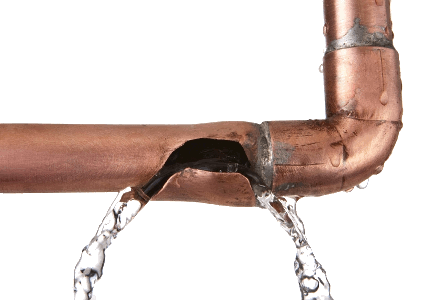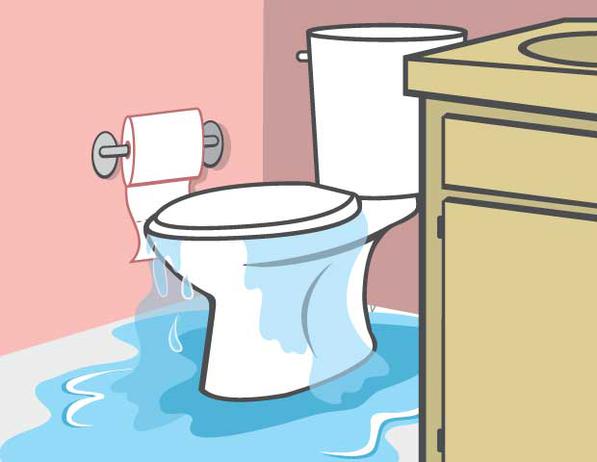 Whether you own a beach home, ski condo or lakeside cottage, your vacation home is an important investment that you will want to safeguard while you are not there, especially during the long winter months when temperatures dip below freezing and ice and wind storms can knock out electrical power. Here are a number of easy steps you can take to protect your home from the elements and give you peace-of-mind. Many of these strategies to winterize your vacation home are inexpensive, do-it-yourself projects that you can do in a single weekend!Â
Whether you own a beach home, ski condo or lakeside cottage, your vacation home is an important investment that you will want to safeguard while you are not there, especially during the long winter months when temperatures dip below freezing and ice and wind storms can knock out electrical power. Here are a number of easy steps you can take to protect your home from the elements and give you peace-of-mind. Many of these strategies to winterize your vacation home are inexpensive, do-it-yourself projects that you can do in a single weekend!Â
1. Control the Temperature
Controlling the temperature in your vacation home is top priority. Make sure your furnace is working properly and clean or replace the filters. If you plan to use your home throughout the winter, you will need to set your thermostat to between 40°F and 55°F (4.5°C and 12.7°C) to prevent frozen pipes (more on this later).
You can greatly reduce heating bills by inspecting exterior doors and windows for drafts and installing weather-stripping and caulking where you detect cold air leaks. If you have older windows, apply low-e plastic window film to the inside panes. This is an inexpensive way to reduce energy loss by 30 to 50 percent.
Your chimney is another site for heat loss. Keep the fireplace damper closed when not in use and replace the damper door if it is deteriorating. If you use your fireplace or wood stove regularly, an annual cleaning by a professional is a good idea.
Consider adding another layer of fiberglass insulation in your attic (12†inches is a general recommendation) and in other unheated areas of your home. Click here for insulation recommendations specific to your region.
*Note: If your vacation home is used only in the summer, you can safely turn off the heat as long as you properly drain all of the water lines in the house and pour non-toxic antifreeze into all of the toilets, tubs, showers, sinks, dishwasher and washing machine. If draining your home’s complete water system is not feasible or convenient, consider installing a phone-based freeze alarm or Internet thermostat that will alert you of dangerously low temperatures before damage occurs to your home. These devices are relatively inexpensive and easy to install yourself.
2. Control the Water
As temperatures drop below 32°F (0°C), your home becomes vulnerable to damage caused by ice, leaks and freezing pipes. Before the first snow falls, remove dead leaves and debris from your gutters to help prevent ice damns from forming on your roof.  Ice damns can break gutters, damage shingles, and cause water to seep into the house.
Freezing pipes can burst and cause serious damage to walls, floors, furniture and precious keepsakes. In fact, a mere 1/8-inch crack in a pipe can send 250 gallons of water into your house in a single day! Begin safeguarding against frozen pipes by disconnecting all garden hoses, draining exterior water lines, and turning off all outdoor faucets (be sure to use the shut-off valve in the basement). If you have an in-ground sprinkler system, drain all of the lines per the manufacturer’s instructions.
Next, wrap all pipes in unheated areas of your home (including the attic, basement, crawlspace and garage) with insulated tape or flexible molded pipe sleeves. When leaving your home unoccupied, set the thermostat to between 40°F and 55°F (4.5°C and 12.7°C) and open cabinet doors below sinks to allow heat to circulate.
3. Control the Critters
Mice, rats, squirrels and other non-hibernating varmints seek out warm, safe places to build their winter nests. Make sure they don’t move into your house this winter by patching or filling holes or cracks that would allow them to enter. Move all potential nesting material, such as dead leaves, far away from the house.  If you hear activity, set traps in the attic and basement. Conventional spring traps are cheap, reliable and reusable. Natural repellants are also available if you prefer a more humane way to rid your house of pesky rodents.
4. Control your Angst
For true peace-of-mind, consider purchasing one of the many affordable freeze alarms or temperature alarms that will automatically alert you to dangerous low temperatures or flooding conditions in a vacant property. Shop around to find the alarm that works best for you — there are now both landline and cellular phone-based freeze alarms, Internet-based freeze alarms, simple and inexpensive fixed-degree freeze alarms, and more advanced freeze alarms with adjustable temperature set points that can act as comprehensive home monitoring systems.
In addition to remote monitoring devices, ask a neighbor to stop by your house on a regular basis to check up on things. No friendly neighbors? Then consider hiring a professional caretaker to inspect the property inside and out at least once a week. A good caretaker should be capable of handling emergency repairs in your absence and can call to alert you of any problems.
Also, it’s a good idea to stock up on emergency supplies before the big blizzard hits. Be prepared for losing power or becoming housebound by having an adequate supply of candles, matches, flashlights, batteries, non-perishable food, paper plates and cups, potable water, firewood, ice melt pellets, and fuel or charcoal for your grill.  And don’t forget to find your snow shovel and put it in a handy place – you’ll need it when it is time to dig out!
By following these easy steps to winterize your vacation home, your house will be warm and safe and you can relax and enjoy the beautiful winter months with family and friends.
Tell Us!
If you have any winterizing tips of your own, share them with us in the comments!!



